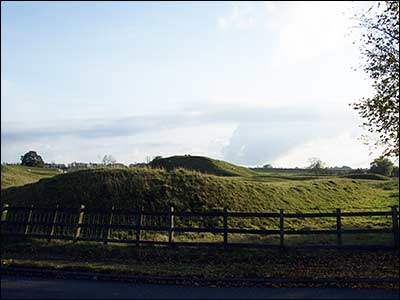|
|||
|
A Brief History of the Parish
|
|||
|
|||
| The Name was originally Giveldene or Yeveldene, the dene on the Ivel, and through time has become Evelden, Yeilden, and today Yelden. Yelden Castle The Church dates from the 12th century, with a broad, short octagonal spire, and stands to the west of the village, on a mound. Inside there are some fine wall paintings. The building was extensively repaired in the 1990s, and the wall paintings were conserved in 2007. The Village School opened in 1845 and closed in 1924. The children then went to Riseley, as they do today. The Windmill was burnt to the ground in October 1881, having ceased milling in 1877. The Chequers was originally known as the White Horse and was constructed of wattle and daub, and the roof was thatched. Sadly it was burnt down in 1850, and was entirely rebuilt. Yelden Parish Records 1602-1812 Dr Emmision wrote this short history of the church as a preface to the transcripts:- Yelden is probably best known historically on account of the two rectors who held the benefice during the upheaval in the middle of the 17th century. Both were graduates of Cambridge; the first became chaplain to the king, the second chaplain to the parliamentary army. Their doctrines were the very antithesis of each other. Dr. John Pocklington, the high church divine, suffered sequestration in February 1640/41, owing to his “idolatry, superstition, and publishing pamphlets wherein he defends those innovations unhappily introduced into the Church”. He died in 1642, and was buried at Peterborough Cathedral. William Dell, his nonconformist and antinomian successor, was in turn ejected soon after the Restoration. His unorthodox action in allowing Bunyan, “a tinker from Bedford”, to preach at Yelden Church on Christmas Day had, amongst other offences, caused Dell to be brought before the House of Lords in 1659. Both Pocklington and Dell were men of character, preachers and writers of controversial literature: consequently, they are given a place in the standard biographies. Our only task is to state in what respect the Register enlarges or corrects existing accounts. Unfortunately, there is no record from for 1641 to 1652 inclusive, as the “Bishop’s Transcripts” are missing. It is difficult to judge from the Transcripts before 1641 to what extent Pocklington resided at Yelden. A number between 1619 and 1634 are certified in handwriting certainly not his own, while those for 1635-1636 and 1639-1640 are signed by curates, suggesting the rector’s absence. Four of his children were however baptised (or born) at Yelden between 1623 and 1627, and William Pocklington, “late parson of Pickwell, com. Leic.”, buried here in 1634, was probably his father. Dell was institutes in the same month as his predecessor was deprived of all his preferments. Three of his children were born at Yelden between 1653 and 1657, the last of whom was Mercy, not Mary. One or more of his successors has struck through the offending word “rector” in the burial entry of Dell’s son in 1655. A more important error has found its way into the Dictionary of National Biography, which states: “He (Dell) was ejected in 1662. He survived his ejection only two years, and was buried at his own desire in unconsecrated ground, the site being a ‘spinney’, or small copse, on his own estate ‘at Samshill in the parish of Westoning’.” But the entry in the BTs is 1669 not 1664 (which contains no entry relating to Dell), and reads: “William Dell dyed November the fifth & interred in his owne ground the seaventh.” There can be no doubt whatever about the reading of the year in the Transcript, but is likely that the last figure was misread for ‘4’ if the date were drawn from the Register. Further, no specific source is given for the date of Dell’s ejection, and it may be an assumption that Dell, as with numerous other nonconformist ministers, quitted his benefice on 24th August 1662. Be this as it may, Josiah Lamplough’s institution is dated January 1660/61. The Manor of Yelden, from shortly before 1400, belonged to the Hampdens (a branch of the renowned Buckinghamshire family), from whom it descended, though passing thrice through daughters, to the wife of Oliver St. John of Beltsoe in 1602. The presentation of Dell to Yelden is the natural outcome of the sympathies of its manorial lord and patron, Oliver St. John, Earl of Bolinbroke, who was a strong supporter of Parliament. The St. Johns owned Yelden for a little over a century, when they sold it to Sir Jeremiah Sambrook, who was member of parliament for Bedford from 1730 until his death in 1740, when one of his sisters brought the manor by marriage to the rapidly rising family of Crawley of Stockwood, near Luton, at the opposite end of the County. The Crawleys remained lords until the beginning of the 20th century. In 1801 the population stood at 209, and by 1931 had fallen to 150. Twenty years later it had almost doubled to 292, and in 1991 stood at 312. The parish is 1,950 acres in area, and is adjoined by Newton Bromswold and Chelveston in Northamptonshire, and Shelton, Dean, Melchbourne and Knotting in Bedfordshire. |
|||
|
|
|||
